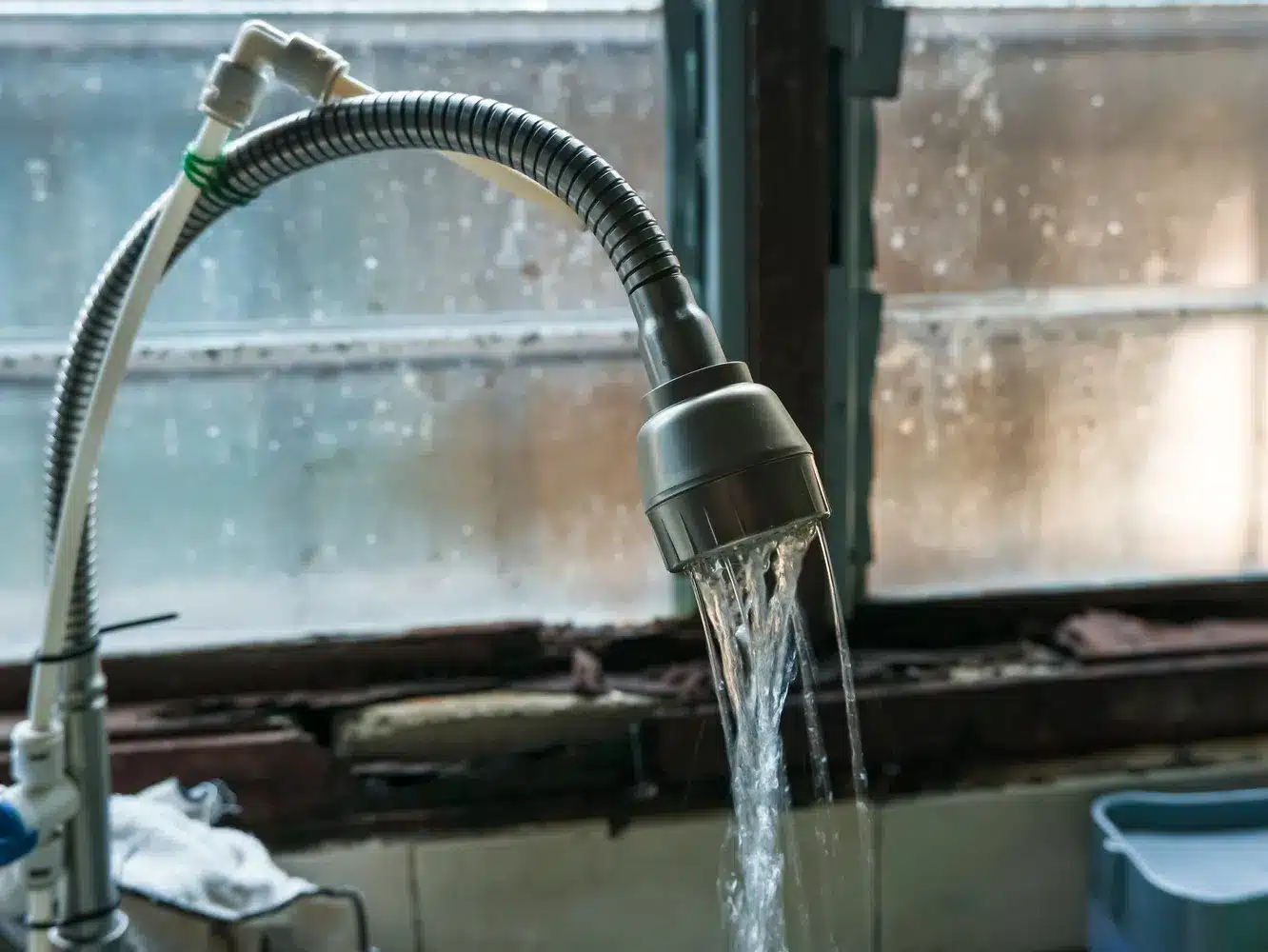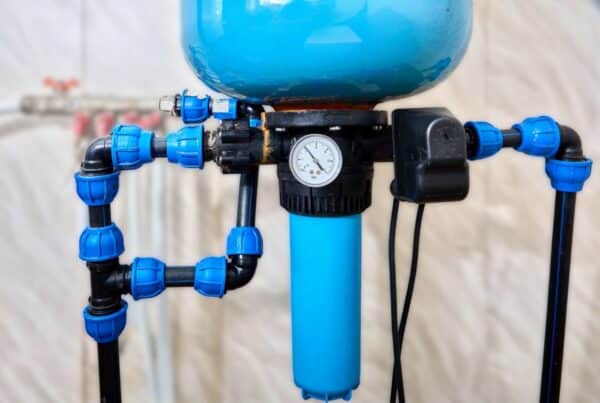
Every homeowner knows the small victories and challenges that come with maintaining a home. Crisp, free-flowing water from your kitchen sink is one of those simple pleasures that can be easily taken for granted—until you’re left with a trickle to rinse off your dinner plates. More than an annoyance, low water pressure in the kitchen sink is enough to increase stress levels some days.
If you’re grappling with how to improve the water pressure in your kitchen sink, it’s essential to start by ruling out broader issues. Below, we’ll dive into the core of your home’s water system to uncover what might be sapping the strength of your kitchen faucet. Whether it’s a clogged aerator, a worn-out regulator, or a more elusive issue, we’re here to guide you through the steps to reclaim the robust water flow that makes your kitchen function at its best.
Common Causes of Low Water Pressure
The journey to restoring your kitchen sink’s water pressure begins with a bit of detective work. Several culprits could be responsible for the weakening stream. This being said, identifying the right one is crucial to crafting an effective solution. Here, we’ll explore the most common causes of low water pressure and how to address each one methodically.
Aerator Woes
The aerator on your faucet serves a noble purpose—conserving water while ensuring a smooth flow. However, it can become clogged with mineral deposits and debris over time. The fix might be as simple as unscrewing the aerator, soaking it in a vinegar solution, and scrubbing it clean. If it’s beyond redemption, a quick trip to your local hardware store for a replacement can do the trick.
Cartridge Check-Up
Hidden within the faucet, a faulty cartridge can be the source of your water pressure woes. By turning off the water supply and disassembling the faucet, you can remove the cartridge to inspect it for sediment or wear and tear. A thorough cleaning, along with swapping out any degraded seals, might be all that’s needed to revitalize your water flow.
Regulator Reassessment
Your home’s water pressure regulator, usually located where the main water line enters the house, is designed to protect your plumbing from high pressure. However, when it fails, it can significantly reduce your water flow. Diagnosing a bad regulator often requires the expertise of a professional, but it’s a check that can save you from unnecessary repairs if it’s indeed the problem.
Faucet Functionality
If the aerator and cartridge are in good shape, the issue may lie deeper within the faucet assembly. Wear and tear over time can lead to internal damage that affects water pressure. In this case, a comprehensive faucet repair or replacement might be the best course of action.
Piping Problems
Leaks or damage in your home’s plumbing can lead to reduced water pressure. These issues can be elusive and often require a professional’s touch to locate and repair. Regular inspections can help catch such problems early before they lead to more significant pressure drops.
Main Line Matters
Blockages or issues within your main water line can also impede the flow of water to your home. These can range from sediment build-up to more serious obstructions that may necessitate professional intervention.
Water Heater Health
For issues with hot water pressure, the water heater is a common suspect. Sediment can accumulate at the bottom, hindering water flow. Periodically flushing the system can help maintain pressure and prevent buildup.

Practical Steps to Improve Water Pressure
Attempting to increase the water pressure in your kitchen sink may seem intimidating, but with a straightforward approach, you can often resolve the issue without an exhaustive to-do list.
Here’s a quick look at solutions for common causes:
For a clogged aerator, simply twist it off, let it bathe in vinegar to dissolve any mineral deposits, scrub it clean, and screw it back in place. This could quickly restore your faucet’s flow.
If a faulty cartridge is to blame, shutting off the water, disassembling the faucet to extract the cartridge, and either cleaning or replacing it should be your go-to move. Don’t forget to inspect and possibly swap out old seals during this process.
Dealing with a water pressure regulator requires checking if your home’s pressure is within normal limits using a gauge. A reading outside the typical range signifies a need for adjustment or replacement of the regulator—a task that might be best left to a professional plumber if you’re unsure.
When it comes to faucet functionality, if internal damage rather than an aerator or cartridge issue is suspected, weigh the cost and effort between repairing and replacing the entire unit. A new installation might be the more practical solution for long-term performance.
Piping problems are less straightforward; they often hide behind walls or under floors and usually call for a professional eye. Signs of leaks, such as water stains or damp spots, should prompt you to contact a plumber for a thorough investigation and repair.
Mainline blockages can be daunting, as they affect the entire household. If you suspect a main line issue, it could be useful to check if your neighbors are experiencing similar problems, which might indicate a municipal supply issue. Otherwise, a licensed plumber should assess and resolve mainline concerns.
Maintaining water heater health is vital for consistent hot water pressure. An annual flush of the tank to remove sediment, ensuring the pressure relief valve is operational, and scheduling routine maintenance checks can prevent problems before they start.

Other Recommended Maintenance and When to Call an Expert
Regular maintenance and knowing when to call in a professional are key to preserving the water pressure in your kitchen. An annual inspection by a licensed plumber can preemptively address hidden leaks or wear that might otherwise escalate. Experts can spot subtle changes in water pressure or quality that often go unnoticed until they become serious.
For your part, pay attention to your home’s water usage patterns and the performance of your water heater. Flushing the water heater to remove sediment or scheduling a service every few years can prevent issues with water pressure. Also, be cautious with what goes down your drain! Greases, oils, and non-biodegradable substances can cause clogs and reduce water flow.
If you encounter new changes in water pressure or a noticeable water quality shift, seek professional attention. While regular maintenance can mitigate many common problems, some situations—like significant pressure fluctuations, persistent leaks, or signs of water damage—should prompt you to immediately contact a plumbing professional. By combining diligent home maintenance with timely professional assistance, you’ll keep your plumbing in peak condition and avoid the disruption of unexpected plumbing emergencies.
Conclusion
The moment that you lose water pressure is a moment of uncertainty. Now you know how to troubleshoot minor issues and increase the water pressure in a kitchen sink! As stated above, there are a variety of reasons why water pressure can drop in your plumbing. If you’re unsure of what’s causing your low water pressure, or for an inspection of your entire plumbing system, reach out to Boggs Inspection Services in Lacey, WA, and surrounding areas.



